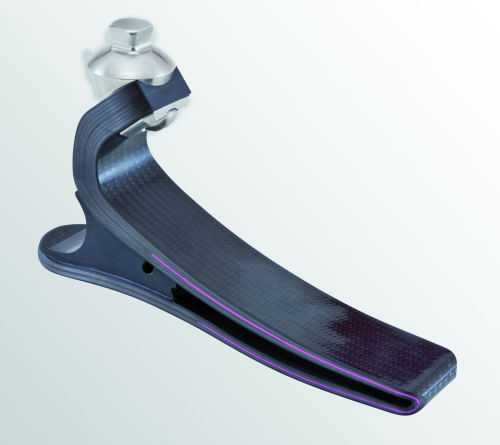
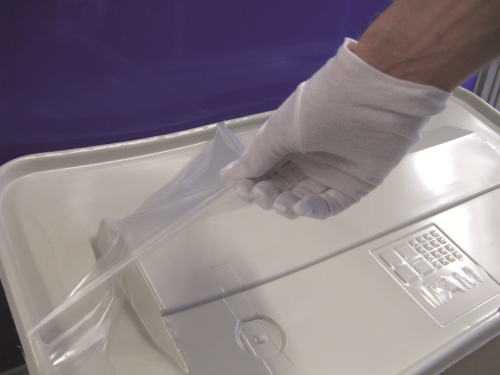
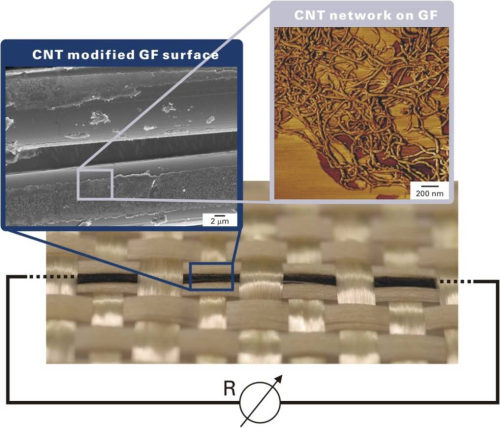
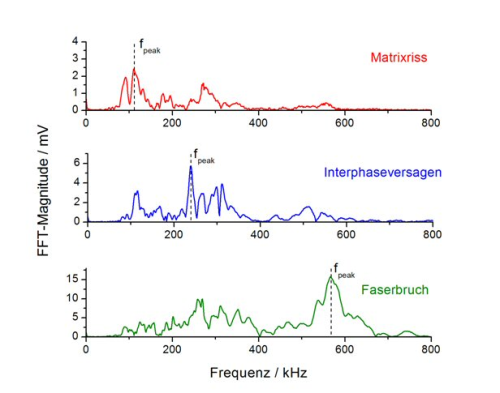
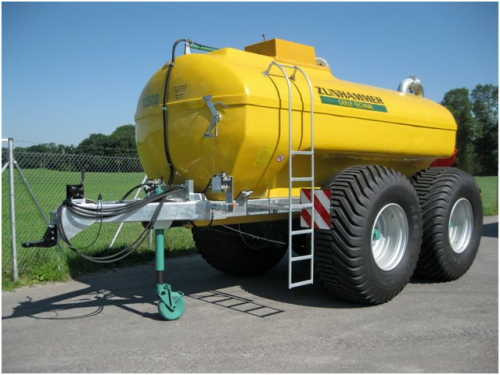
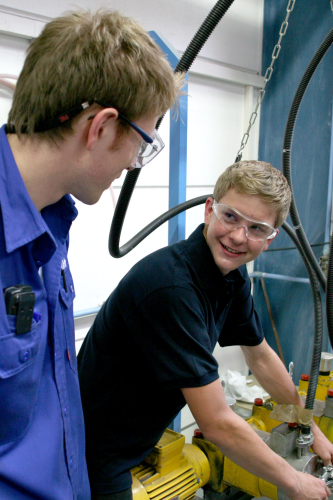
Once again, the AVK conference was the prelude to the COMPOSITES EUROPE trade fair on 9-11 October.
The AVK awards were presented in five categories. The winners are listed below.
Innovative Products/Applications
Gummiwerk KRAIBURG GmbH & Co KG, and its partners Medi GmbH & Co KG and C-Matrixx Carbontechnik GmbH: the medi panthera CF I prosthetic foot
Gummiwerk KRAIBURG and its partners Medi and C-Matrixx Carbontechnik developed the medi panthera CF I carbon composite spring foot, which combines the properties of carbon fibre and rubber to ensure comfortable walking and lateral stability when standing. (Watch a short video showing the foot's motion sequence here.) The creation of a chemical bond (rather than an adhesive bond) between the composite and rubber was the key to the development.
During tests conducted before market launch in Germany one year ago, the carbon foot was subjected to three million load changes without suffering any material failures. Thepanthera is now available internationally.
This technology could also be used in prosthetic legs and development work in this area is in progress. It could also find applications in the mechanical engineering, automotive industry, sports and aviation sectors.
Innovative Processes/Methods
Fraunhofer IFAM (Institute for Manufacturing Technology and Advanced Materials): Manufacturing of release agent- free composite parts using innovative film technology
Researchers from PLATO (Plasma Technology and Surfaces) and experts from the Fraunhofer IFAM project group Joining and Assembling FFM have developed the FlexPLAS® release film which makes it possible to manufacture large composite components without the use of release agents.
The film is an elastic polymer with a flexible plasma polymer release layer. This allows easy removal of components from moulds even when stretched by 300%. The film can be applied using a special deep-drawing process without alteration of the tool design, and is suitable for both female and male moulds.
When using this release film, the composite component can be coated without the time-consuming process of first removing the release agent residues. If the film is left on the components until the end of the process or delivery to the customer, it also functions as a protective film.
FlexPLAS release film has been used to manufacture large carbon fibre reinforced plastic (CFRP) components on a 1:1 scale, without using release agents, via a prepreg process at 180°C in an autoclave. The components can then be coated without further pre-treatment because the release film allows clean removal from the mould without any transfer of residues.
This technique can also be used for other manufacturing processes such as the (vacuum) infusion process or the wet lay-up process.
Research/Science
In 2012, AVK announced two winners in this category.
Leibniz Institute of Polymer Research Dresden, and its partner Nanocyl SA: Online in-situ structural monitoring in glass fibre reinforced plastics
The concept for structural health monitoring of composites developed by the Leibnitz Institute is based on an electrically conductive fibre/matrix boundary layer that is produced using a network of percolated carbon nanotubes (CNTs).
This is done by impregnating the glass fibres with CNTs during the spinning process and then integrating them into the composite. The fibres now not only reinforce the composite but also act as a sensor. The slightest deformations within the conductive boundary layer – such as those produced by mechanical loads – immediately result in a change in electrical resistance. This can be recorded in real-time (online) and used to provide a qualitative assessment of the structure.
Both sensors and percolated CNT networks for monitoring structures already exist but these methods were either insufficiently sensitive or overly complex and were taken as the starting point by the team from Dresden. The problem of sensitivity was solved by generating conductivity at the point subjected to the highest loads, i.e. the area most at risk of failure: the boundary layer. The issue of complexity was solved by integrating the CNT element, which is otherwise difficult to process, during the fibre spinning phase rather than when forming the composite.
The principle of the boundary layer sensor is universally applicable and the coating formulation can be adapted for use with different polymer matrices and reinforcing fibres.
University of Bayreuth: Characterisation of failure mechanisms in continuous fibre reinforced thermoset composites using quantitative acoustic emission analysis
University of Bayreuth researchers have developed a novel combination of the familiar process of acoustic emission analysis with the mechanical testing of composites. This has led to a deeper understanding of the complex failure mechanisms in these materials.
During the material testing procedure the acoustic signals emitted were analysed using pattern recognition algorithms and classified according to their frequency spectra. This made it possible to observe the failure mechanisms occurring (fibre breakage, matrix cracking and interphase failure) as well as their load dependent behaviour independently of each other before the complete failure of the FRP.
One of the major breakthroughs of the Bayreuth researchers lay in the adapting this method, initially developed for quasi-statistical testing, for a dynamic testing procedure in order to map the long-term loads as realistically as possible. This is essential for understanding the microscopic failure mechanisms that contribute to long-term material fatigue, especially for components subject to highly dynamic loads.
This method provides valuable information, especially in predicting lifespan under dynamic loads, and can be applied easily and quickly to other material systems and studies due to its standardised approach.
Special award: Successful Implementation of FRP Procedures in Small Companies
polyGLAS Weirather GmbH and its partner Lange + Ritter: Production of large components using the RTM Light process in order to reduce emissions
The first components in RTM Light form were produced at the end of 2011 using 80 kg of resin and 40 kg of glass, further components using 100-200 kg of resin have now been converted to the process. Six different volume tanks are already being produced with one set of tools. 80% of series production has now been converted to RTM Light. A variety of tank sizes can therefore be built using one tool, which dramatically reduces costs.
The advantages of the RTM Light process are that emissions are much lower than for hand lay-up and the costs of heating and vacuum extraction are also significantly reduced. The process produces less waste and laminate quality is higher. Walls can therefore be manufactured to a thinner specification, which in turn saves raw materials.
Exceptionally Attractive FRP Employer
Lamilux Heinrich Strunz GmbH
LAMILUX is a European manufacturer of daylight systems and an international producer of FRP. LAMILUX understands that its employees are essential to its success. The company therefore invests heavily in developing the skills and knowledge of all its employees. The number of apprentices in the company (currently 12%) is intentionally high and the EDUCATION for EXCELLENCE® programme promotes the personal development of its trainees. The company also guarantees the quality of its training by providing further training for its own trainers.


